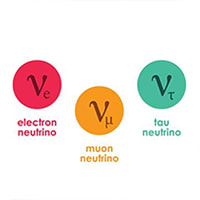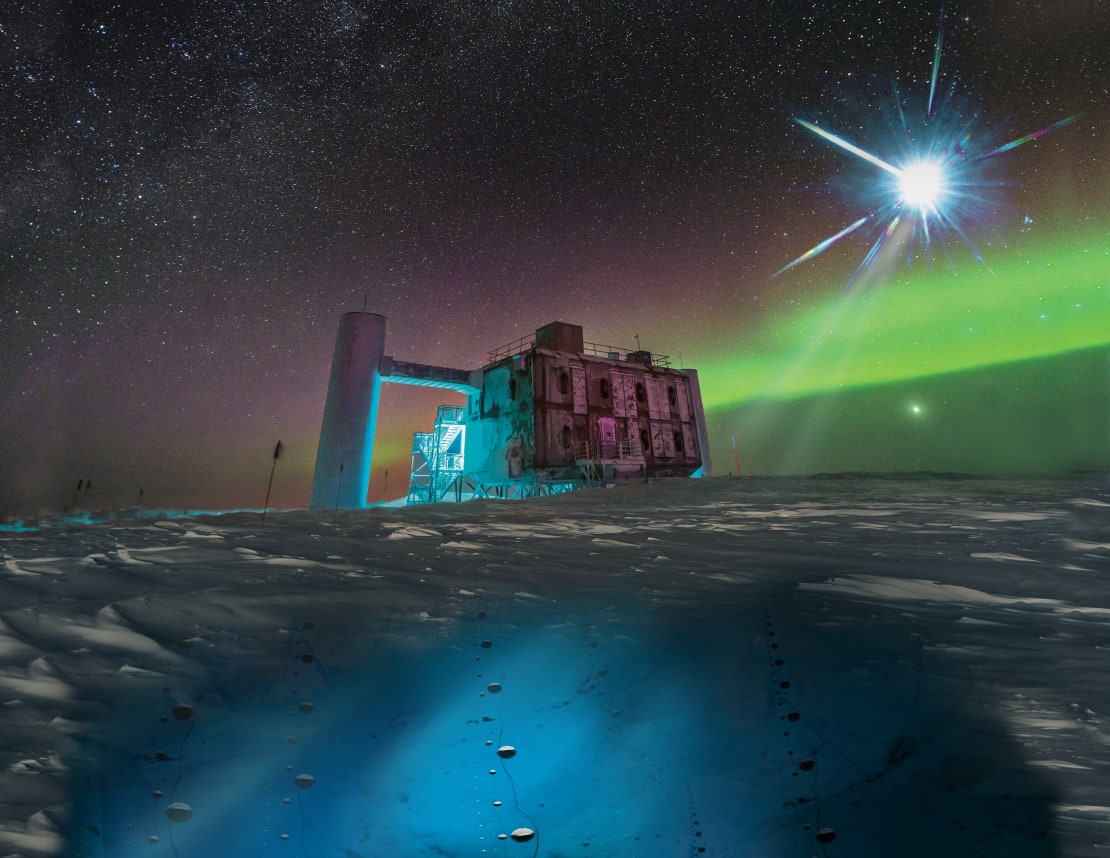What are these things, anyway?
Neutrinos are elementary particles that lack an electric charge and are produced when particles change identities, like during the decay of radioactive elements—or as Frederick Reines would say,
“…the most tiny quantity of reality ever imagined by a human being.”
The name neutrino was coined by Enrico Fermi as a wordplay on “neutrone,” the Italian word for neutron, which is what Wolfgang Pauli, who first postulated the particle, had dubbed it. Of all the high-energy particles, only weakly interacting neutrinos can directly convey astronomical information from the edges of the universe—from deep inside the most cataclysmic processes.

Our current understanding indicates that there are three different types of neutrinos, each relating to a charged particle. Copiously produced in high-energy collisions, traveling essentially at the speed of light, and unaffected by magnetic fields, neutrinos meet the basic requirements for astronomy. Their unique advantage arises from a fundamental property: they are affected only by the weakest of nature’s forces (except for gravity) and are therefore essentially unabsorbed as they travel cosmological distances between their origins and us.
Where do they come from?
From what we know today, a majority of the neutrinos zooming through space were born around 15 billion years ago, soon after the birth of the universe. Since that time, the universe has continuously expanded and cooled, and neutrinos have just kept on going. They constitute a cosmic neutrino background radiation similar to the more familiar cosmic microwave background radiation. Other neutrinos are continuously being produced from nuclear power stations, particle accelerators, nuclear bombs, and general atmospheric phenomena as well as from the births, collisions, and deaths of stars, particularly the explosions of supernovas. A collision involving a high-energy proton will also produce neutrinos, so cosmic ray sources also produce neutrinos.
What do neutrinos have to do with IceCube?

IceCube is designed to identify the byproducts of neutrino interactions. Most neutrinos zoom right through matter, leaving no detectable presence. A neutrino that does interact produces electrically charged particles that can produce a readily measurable signal in a transparent medium. IceCube measures the light generated by secondary particles produced when neutrinos, with energies of thousands to billions of times greater than the fusion reactions that power the sun, interact in the South Pole ice. The amount of light and the pattern it produces allow scientists to estimate the energy, direction, and identity of the original neutrino.
This opens up many exciting science options ranging from neutrino astronomy to studying neutrino properties at energies that can’t be reached at accelerator facilities.
A little bit of history
The neutrino has been around for a while now—Pauli first hypothesized its existence in 1931.

- 1931 – Pauli presents hypothetical “neutron” particle
- 1933 – Fermi develops theory of weak interaction and baptizes the neutrino
- 1956 – First discovery of the neutrino by an experiment
- 1962 – Discovery of another type of neutrino at Brookhaven National Lab
- 1968 – First experiment to detect electron neutrinos produced by the sun
- 1978 – Discovery of the tau lepton at Stanford Linear Accelerator Center, existence of tau neutrino theorized
- 1983 – Kamiokande becomes operational
- 1985 – The IMB experiment & Russian team reports measurement of non-zero neutrino mass
- 1987 – Kamiokande and IMB detect simultaneous burst of neutrinos from Supernova
- 1989 – Kamiokande becomes second experiment detecting neutrinos from the sun and confirms anomaly of finding only 1/3 expected rate
- 1990 – IMB confirms deficit of muon neutrino interactions
- 1991 – LEP experiments show that there are only three light neutrinos
- 1994 – First proclamation of possible neutrinos oscillations seen by LSND experiment
- 1995 – Missing solar neutrinos confirmed by GALLEX
- 1996 – AMANDA neutrino telescope observes neutrinos at the South Pole
- 1998 – Super-Kamiokande collaboration announces evidence of non-zero neutrino mass
